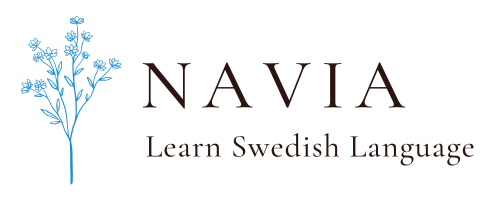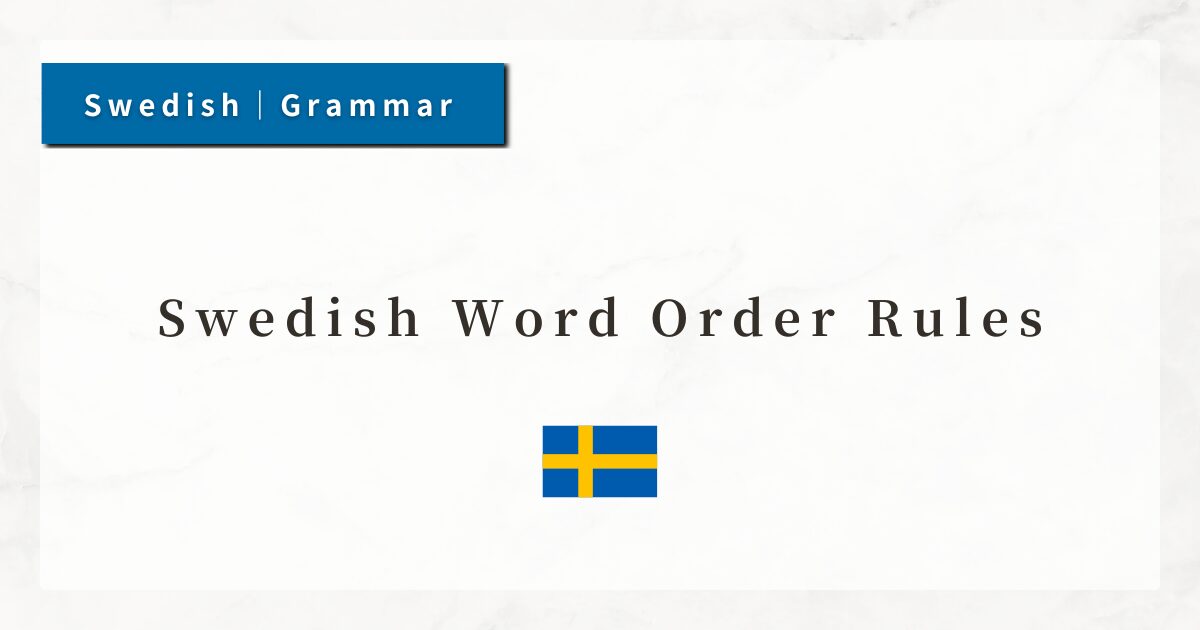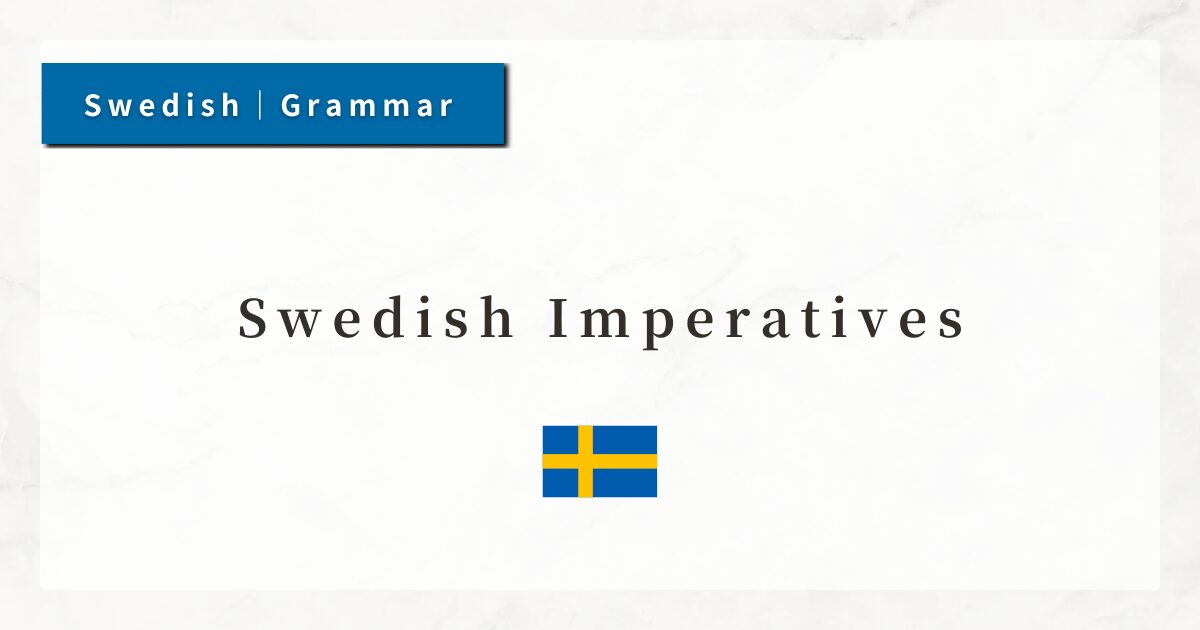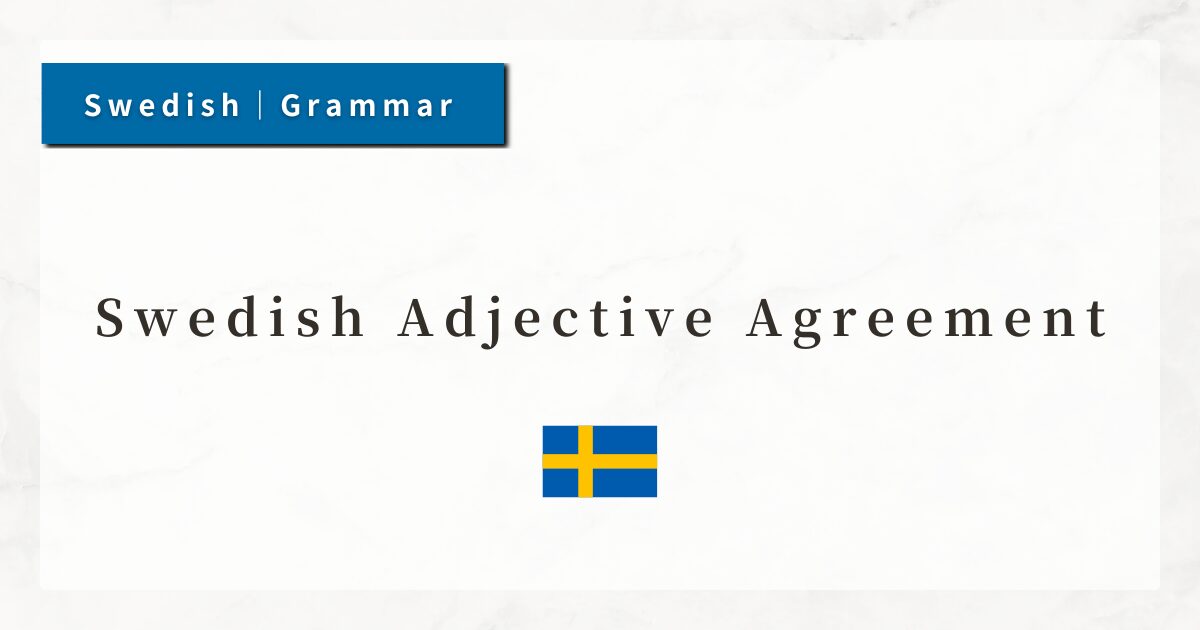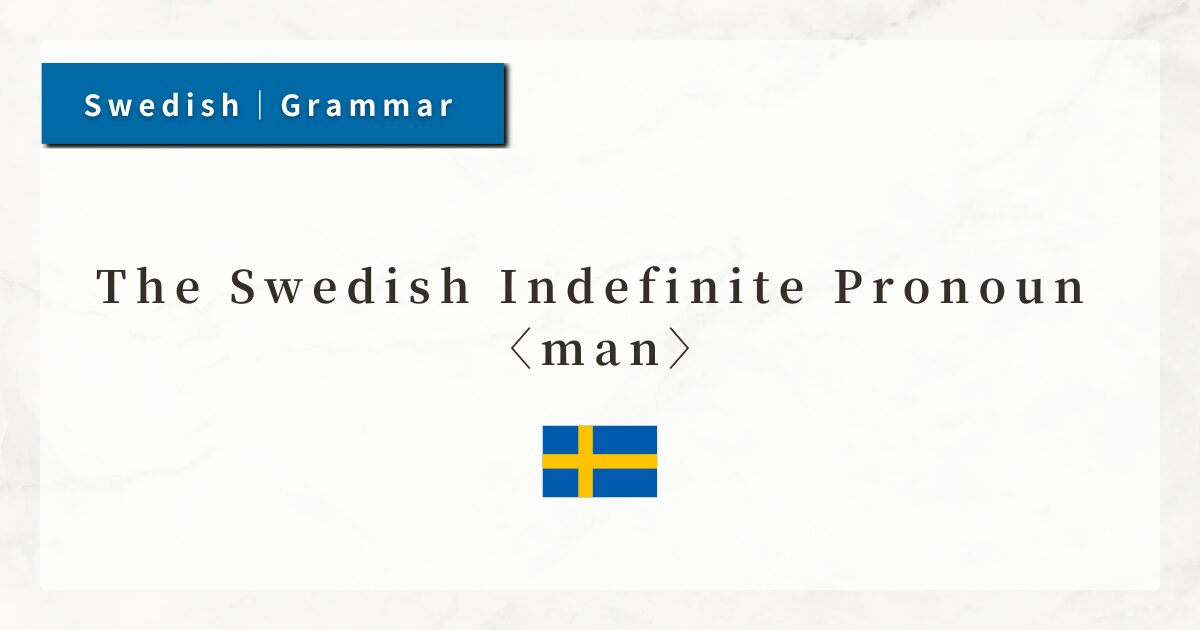#7 Swedish Verbs in the Present Tense|Conjugation Rules and Examples
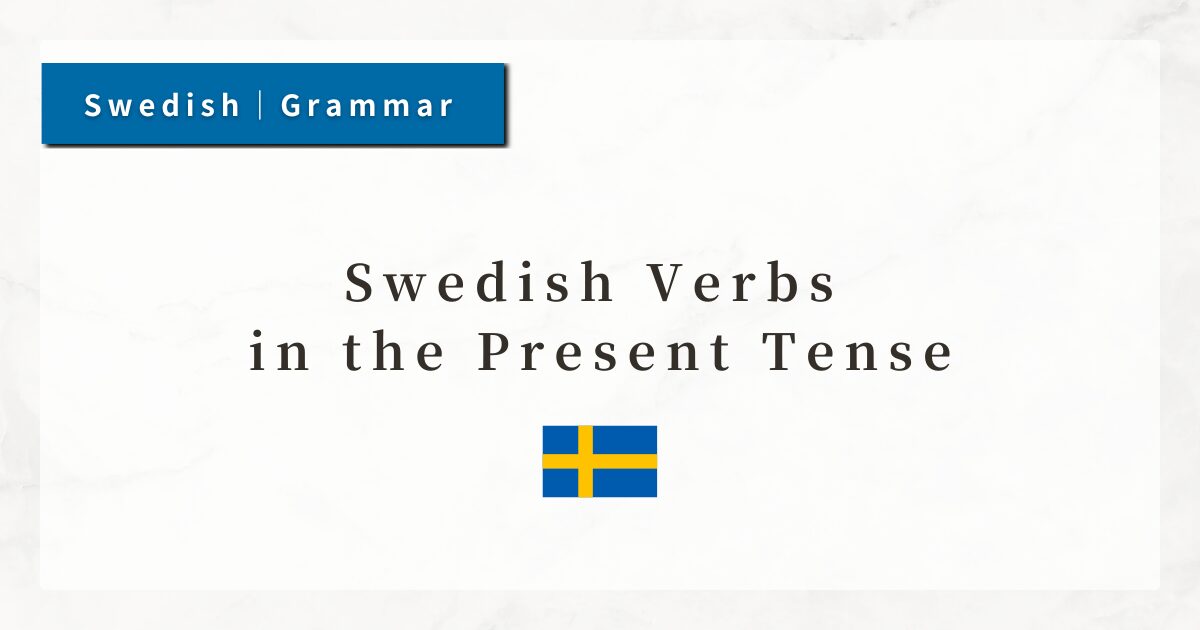
In Swedish, verbs change their forms depending on tense, such as the present tense, past tense, and perfect tense.
In this lesson, I will focus on the most fundamental tense: the present tense, explaining its conjugation rules and usage.
The present tense is used to describe actions happening now or habitual activities, and it is the most commonly used tense in everyday conversation.
Since the number of conjugation patterns is small and relatively simple, it is important to master the basics thoroughly.
1. What is the Present Tense?
The Swedish present tense is used to describe ongoing actions, habitual or daily activities, and even general truths.
Specifically, the present tense is used in the following situations:
- Ongoing action
Jag skriver ett mejl.
(I am writing an email.)
→ Describes an action happening “right now.” - Habitual action / daily routine
Hon arbetar varje dag.
(She works every day.)
→ Describes daily habits or routines. - General truth / universal fact
Vatten kokar vid 100 grader.
(Water boils at 100 degrees.)
→ Describes scientific or universal facts.
In English, we distinguish between the “present tense” (I speak) and the “present progressive” (She is eating).
In contrast, Swedish has only one present tense that covers both meanings. There is no separate structure like the English progressive tense. This makes Swedish grammar simpler and easier for beginners to grasp.
2. Verb Conjugation Patterns
When conjugating a verb from the infinitive (dictionary form) to the present tense, Swedish verbs are divided into four categories.
2-1. The -ar Type: Most Common and Regular
In this type, -ar is added to the stem to form the present tense. The stem itself does not change.
This is typical of verbs ending in -a in the infinitive and is usually the first pattern learned by beginners.
| Infinitive | Present | Meaning |
|---|---|---|
| tala | talar | to speak |
| studera | studerar | to study |
| jobba | jobbar | to work |
2-2. The -er Type: Stem Changes Possible
Another common pattern is formed by adding -er to the stem. However, some verbs undergo vowel changes in the stem, which learners must pay attention to.
| Infinitive | Present | Meaning |
|---|---|---|
| läsa | läser | to read |
| skriva | skriver | to write |
| dricka | dricker | to drink |
2-3. The -r Type: Common with Short Verbs
Here, the verb simply adds -r to the stem. This group mainly consists of verbs that already end in a vowel in the infinitive, so changes are minimal.
| Infinitive | Present | Meaning |
|---|---|---|
| bo | bor | to live |
| tro | tror | to believe |
| må | mår | to feel / to be (well) |
2-4. Irregular Verbs: Basic but Unique
These verbs show irregular changes, where the infinitive and present forms differ significantly. They follow no predictable rule and must be memorized individually.
| Infinitive | Present | Meaning |
|---|---|---|
| vara | är | to be |
| ha | har | to have |
| veta | vet | to know |
Irregular verbs such as vara and ha are extremely common and form the foundation of the language. They should be memorized early on.
3. Verbs Have the Same Form for All Persons
Unlike English, Swedish verbs do not change according to the subject.
For example, in English: I speak vs. he speaks. In Swedish, the verb form remains the same regardless of the subject. The verb tala (to speak) always appears as talar in the present tense.
| Subject | Example Sentence | Translation |
|---|---|---|
| Jag (I) | Jag talar svenska. | I speak Swedish. |
| Du (you) | Du talar svenska. | You speak Swedish. |
| Han (he) | Han talar svenska. | He speaks Swedish. |
| Hon (she) | Hon talar svenska. | She speaks Swedish. |
| Vi (we) | Vi talar svenska. | We speak Swedish. |
| Ni (you all) | Ni talar svenska. | You (plural) speak Swedish. |
| De (they) | De talar svenska. | They speak Swedish. |
This feature—that verbs do not change according to the subject—makes Swedish considerably easier for learners compared to many other languages.
4. Summary
- The Swedish present tense (presens) expresses current actions, habitual routines, and general facts all with one form.
- There are four conjugation types: -ar type, -er type, -r type, and irregular verbs. Most verbs are regular.
- Verbs do not change depending on the subject, making sentence construction straightforward as long as word order is respected.
- Common irregular verbs (är, har, vet) appear frequently, so it is useful to learn them early.
